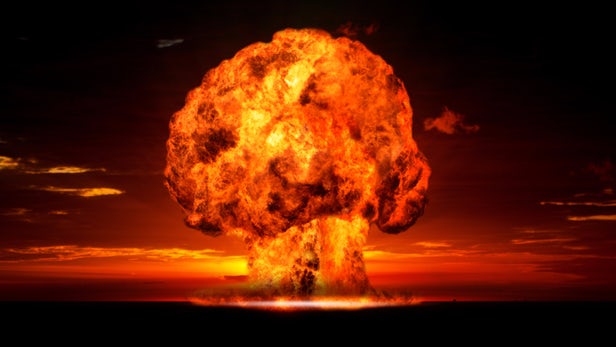Just one nuclear detonation could plunge Earth into "nuclear autumn"

A new study finds that just one big nuclear detonation could be enough to plunge the world into climate-fueled chaos (Credit: curraheeshutter/Depositphotos)
Many predictions examining the potential consequences of a nuclear strike focus on either the immediate fatalities or the radioactive aftermath. A team from the University of Nebraska-Lincoln has taken a broader look at what effect the detonation of a nuclear weapon would be on global climate patterns – and the conclusions are a little frightening.
The team's research was inspired by a concern that we have moved passed the classical Cold War paradigm, where the United States and the Soviet Union were frozen in a stand-off dominated by the doctrine of mutually assured destruction. Many smaller, and potentially erratic, nation-states have now gained nuclear weapons, raising the important question of what the broader effects of a nuclear strike would be on the entire globe.
The study expands on previous nuclear war simulations that calculated an ignition of 1,300 sq km (579 sq mi) of urban land would disperse more than 5 million metric tons of black carbon particles into the stratosphere. These simulations predict not so much the catastrophic "nuclear winter" that the 20th century Cold War panic taught us, but rather a more moderate "nuclear autumn" scenario.
The new study estimates that if 5 million metric tons of black carbon were ejected into the stratosphere it would result in a significant decrease in global rainfall, anywhere from 20 to 80 percent depending on the specific area. This would affect the planet's total volume of agricultural production with growing seasons potentialy reduced by between 10 and 40 days per year for up to five years. The study estimates the resulting famine from this assortment of climate effects could kill up to a billion people, mainly in developing "food insecure" countries.
The crux of the study then looks at the current world nuclear weapon stocks, estimating blast yields and hypothesizing how many blasts would be needed to ignite the 1,300 sq kmr area that would release 5 million metric tons of black carbon.
The Hiroshima bomb, which was 15 kilotons and destroyed a 13 sq km area (5 sq mi), was used as a reference point for the study. It's estimated 100 of these types of bombs would need to be detonated to cause a "nuclear autumn" scenario. But we have many stronger weapons now and examining the arsenals of the US, Russia and China, the study finds this catastrophic scenario could be triggered by fewer than five bombs.
Most concerning though is the conclusion that China's most powerful nuclear weapon, a 5-megaton beast, could single-handedly send the world into "nuclear autumn" with just one detonation. China has 20 of these weapons.
This isn't the first study to look at the global climate effects from a localized nuclear battle. A key study published in the journal PNAS in 2007 found that 100 Hiroshima-size bombs exploded in northern subtropic cities would have a catastrophic effects on global ozone levels.
The science behind these studies is far from definitive though, and for 30 years scientists have debated the veracity of these nuclear doomsday claims. There is argument over how much combustable material would actually be kicked into the stratosphere from a large nuclear blast, along with uncertainty over how long it would remain in the atmosphere and what the tangible effects would ultimately be.
Many more apocalyptic 1980s doomsday theorists have softened their "nuclear winter" predictions over the years. This moved us to the more moderate, but in many ways equally catastrophic, "nuclear autumn" scenario.
Unfortunately, this is one of those scientific debates that will only ever truly be settled in the instance of a major nuclear detonation, and no one really wants to sit by and wait for that to happen just to prove a point. Adam Liska, lead author in the study, hopes this research can help us understand the potential impacts of nuclear detonations and, in a worst case scenario, try to mitigate the global impacts.
"We pulled together what is known about nuclear weapons today, to make a case about the magnitude of these impacts," says Liska. "With that understanding, we can make better choices going forward."
The team published its report in the journal Environment: Science and Policy for Sustainable Development.
Source: University of Nebraska-Lincoln
